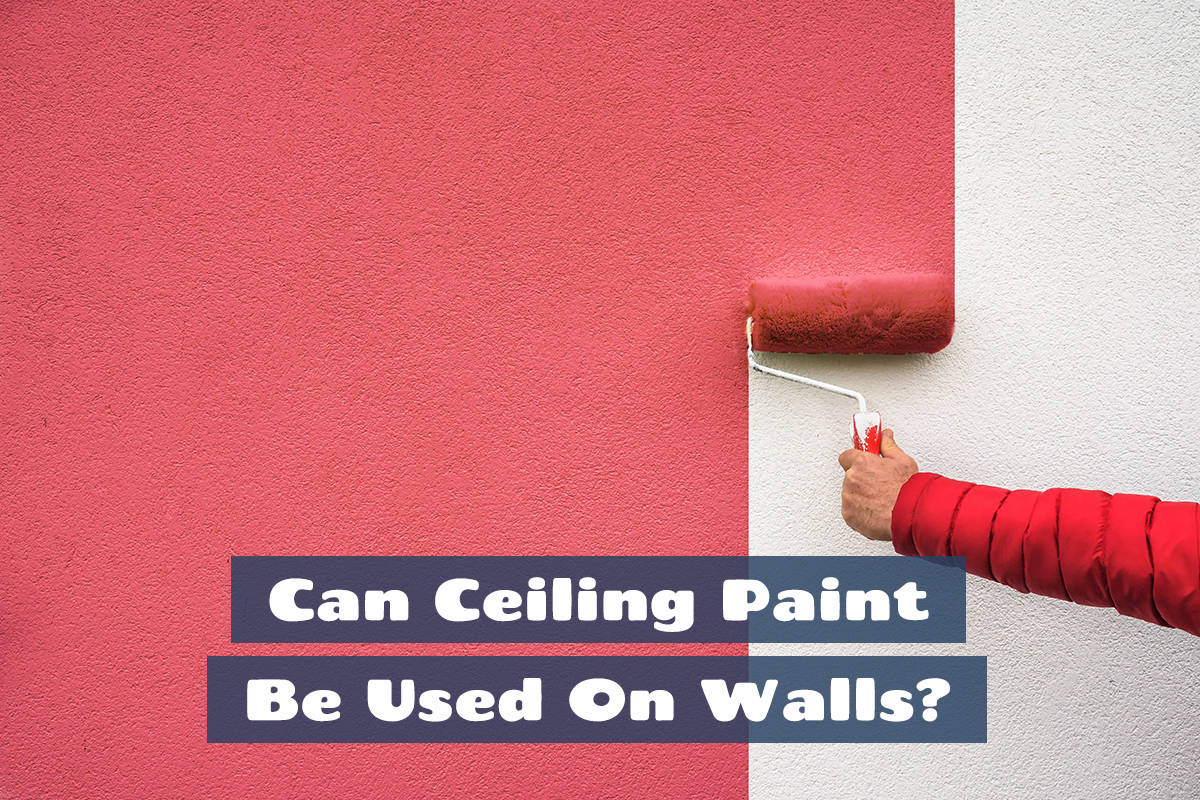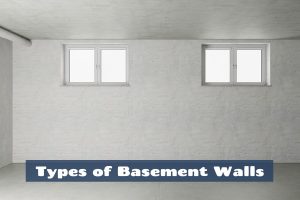You might expect that tins of ceiling paint and tins of wall paint contain exactly the same types of paint, but are just being marketed differently. However, there are some key differences between ceiling paint and wall paint that make them ideally suited to their specific intended uses.
If you have some leftover ceiling paint lurking in your garage then you might be wondering if you can make use of it by painting your walls with it. Here we explore the qualities of ceiling paint and wall paint, comparing them to help you understand in which scenarios the two types of paint could be used interchangeably.
Ceiling paint can be applied to walls, but you might regret making this cost-cutting decision in the future if you aren’t aware of the implications. Ceiling paint is not durable and cannot be scrubbed clean, making it a bad choice for high-traffic areas or any walls that regularly need to be wiped down. It also has a flat finish that does not reflect light, so it should be avoided on walls in low-lit rooms.
What is the Difference Between Ceiling Paint and Wall Paint?
Ceiling paint is formulated specifically for use on ceilings, while wall paint is formulated to have qualities that are better suited to use on walls. This means that ceiling and wall paints have a number of differences.
Viscosity
One of the biggest differences between ceiling paint and wall paint is viscosity. Viscosity refers to how thick and stick a substance is, and in terms of paint, this will really affect the application process. Ceiling paint is very viscous, which helps to prevent it from dripping when applied overhead on the ceiling.
By contrast, wall paint is thinner and considerably less viscous. This is fine for wall paints because they are less likely to drip as a result of gravity. Ceiling paints need to be more viscous, otherwise applying the paint overhead would create a considerable mess. The high viscosity of ceiling paint means it sticks better to the ceiling, creating better coverage and less incidence of unsightly drips.
Sheen
Ceiling paint has a flat finish, while wall paints come in a range of finishes that usually have some level of sheen. Eggshell is a popular finish for wall paint, which has a slight sheen allowing it to reflect some light and be durable enough to be scrubbed clean.
A flat or matte finish works well for ceiling paint because it helps to hide imperfections such as cracks or dents in the ceiling. Flat paint will also give a more uniform finish to the surface of the ceiling since it does not reflect light.
Durability
Wall paints come in finishes that are much more durable than ceiling paint. The flat finish of ceiling paint means it isn’t able to be cleaned effectively, which is fine for use on a ceiling because ceilings are not likely to get scuffed or marked.
For walls, wall paint is ideal since it is more durable. Most paints designed for use on walls can be wiped or scrubbed clean to remove marks or stains and make them look new.
Color
Ceiling paints usually only come in white because this is the widely accepted color of ceilings. Some ceiling paints will have a light pink or blue tint that can be seen as you apply the paint to the ceiling, but the paint will dry white.
This allows the user to see where they have already applied the paint during the application, helping to ensure no spots are missed. Wall paints come in an enormous range of seemingly never-ending colors, allowing users to really personalize the look of their homes.
Price
Ceiling paints are usually more affordable than wall paints. They typically come in large containers and are less expensive to buy than smaller containers of wall paint. The fact that ceiling paint is more budget-friendly may lead you to wonder if you can use ceiling paint on the walls, as this could be a good way to save money.
Can You Paint Walls with Ceiling Paint?
If you have some ceiling paint leftover you might be wondering if you can make use of it by giving some walls in your home a fresh coat of paint. Some people also question if they can use ceiling paint on walls to save money since ceiling paint is usually more affordable.
While you can use ceiling paint on walls, that doesn’t necessarily mean that you should. There are some key differences between ceiling and wall paint which means the two aren’t interchangeable.
Ceiling paint has a flat finish that absorbs light rather than reflects it, which is ideal for ceilings. On walls, most people prefer to have a slight sheen to their paint because it helps to reflect light and create a bright and airy feel. If your room gets a lot of bright, natural light, then you could use ceiling paint on the walls because it isn’t going to greatly affect the light levels.
If you’re painting a high-traffic area then ceiling paint should be avoided on the walls. This is because ceiling paint is not durable and cannot be wiped clean. In any areas where the walls could sustain scuffs or marks, wall paint with a slight sheen will ensure better durability.
Ceiling paint typically only comes in white or very few other neutral colors. If you’re happy with a white, flat wall with low durability, then ceiling paint can work on walls.
Can You Paint Ceilings with Wall Paint?
If you can use ceiling paint on the walls, does this mean you can also use wall paint on the ceiling? Technically, yes, but you’re going to want to check the formulation of the paint first since wall paint comes in a wide range of finishes and consistencies. Standard wall paint is quite thin, which can be a problem when it comes to applying it on a ceiling because it is likely to drip down onto the floor before it dries.
It also has lower coverage than ceiling paint, which means you are likely going to need to give the ceiling more coats than you’re used to, inevitably leading to shoulder and arm aches. However, it is becoming more and more popular for ceilings to be painted in the same color as the walls in a room.
This is because a consistent, cozy feel is created where you feel enveloped in the space. If you want to achieve this look, you have two options. Firstly, you can use the exact same paint for your walls and on your ceiling but take note to watch out for drips and apply additional coats for optimum coverage. Secondly, you could instead have paint made up specially for your ceiling, in the same color as your walls.
Hardware stores with paint mixing capabilities are able to mix any type of paint for you in any color you like. This means you could choose a thick, viscous type of paint and ask for it to be mixed into a color that is exactly the same as the color on your walls. This will allow you to have ceilings that match walls without sacrificing quality.








